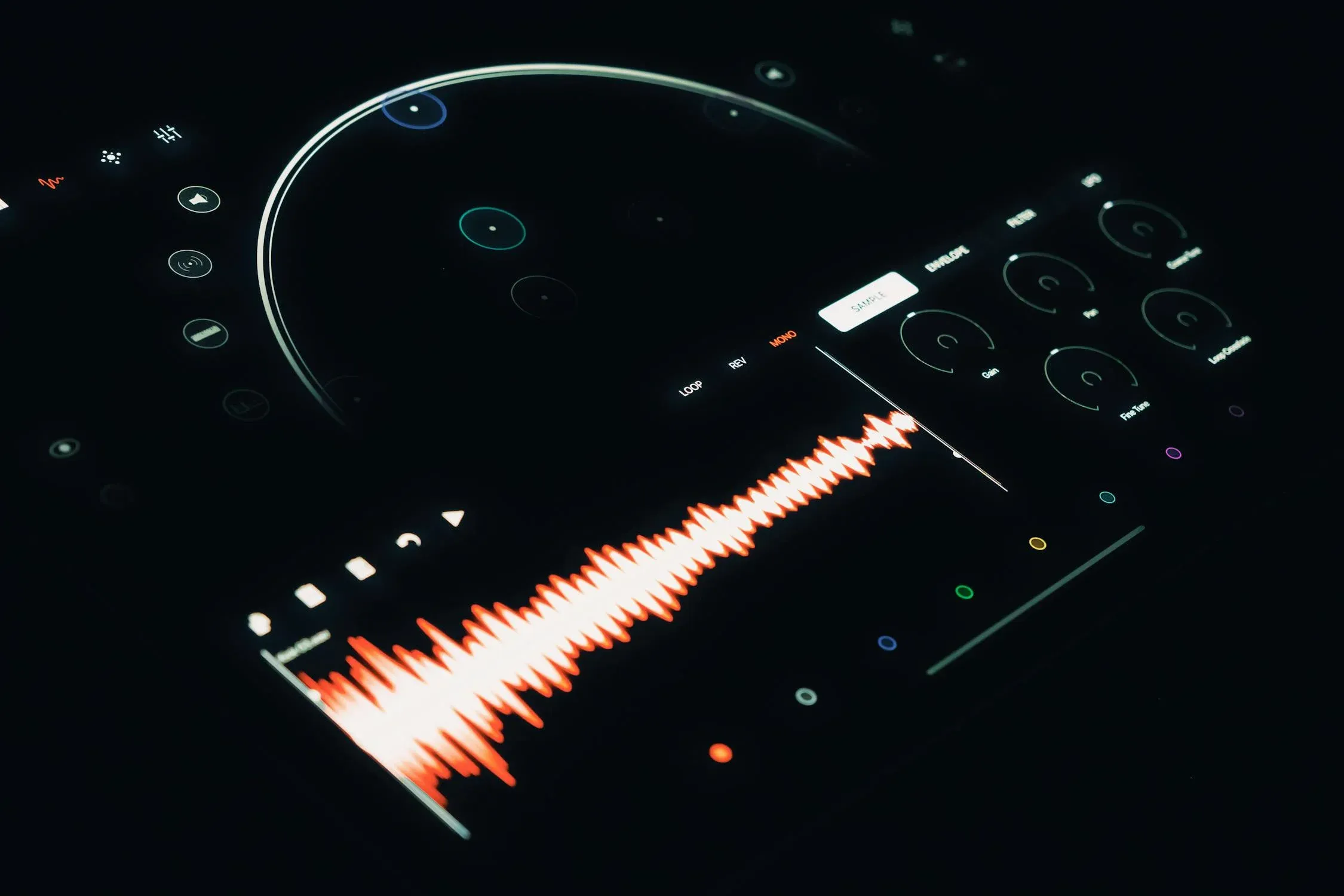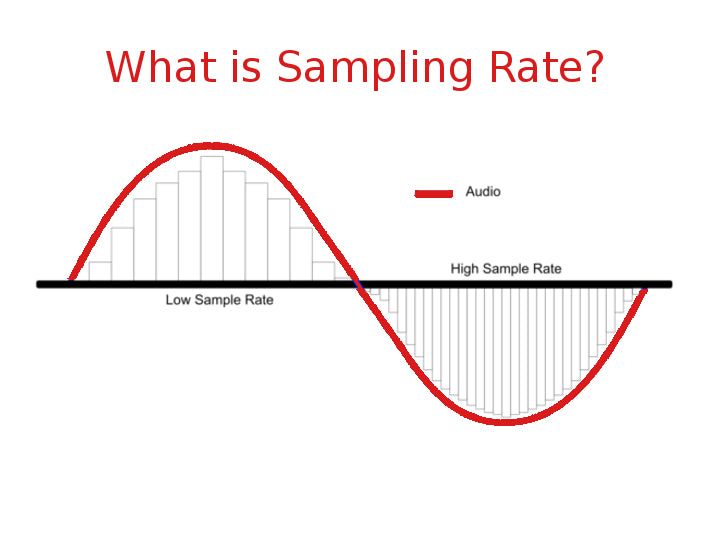In the world of digital audio, sampling rate is a crucial concept that directly affects the quality of audio data and the accuracy of playback. Whether you're an audio engineer, a musician, or simply an enthusiast, understanding sampling rate is essential for making informed decisions about recording, editing, and playing back digital audio. At its core, the sampling rate determines how frequently audio signals are captured and converted into digital data, which in turn influences the fidelity and clarity of the sound. Higher sampling rates can capture more detail and nuance, while lower rates may result in a loss of audio quality.

What is Audio Sampling?
Audio sampling is the process of converting analog audio signals into digital signals. It is the basis of digital audio processing, which enables us to store sound in digital devices and edit, process and play it through digital technology.
The process of audio sampling has three steps: sampling, quantization and encoding.
Sampling: Get samples from the analog signal at regular intervals.
Quantization: Convert the continuous amplitude of the sample into discrete digital values.
In the quantization process of digital audio and images, the bit depth determines the number of discrete levels available. Lower bit depth means fewer quantization levels, which can cause quantization noise and distortion, and higher bit depth helps provide a larger dynamic range and reduce distortion.
- 8-bit audio: This is a fairly low-quality reproduction, producing 46dB audio - about half of the highest level of human hearing.
- 16-bit audio (65,536 values): This is the sound that the human ear can usually hear at 96dB. So it is usually the standard CD format.
- 24-bit audio (16,777,216 values): It is commonly used extensively in professional audio production. It provides a dynamic range of about 144 dB, which can more accurately capture and reproduce subtle audio nuances.
- 32-bit audio (4,294,967,296 values): The choice of bit depth depends on your specific audio recording and production requirements.
Encoding: Convert the quantized digital values into binary data.
What is Sampling Rate?
Sampling rate, usually measured in Hertz (kHz), refers to the number of times an analog signal is sampled in one second. In digital audio processing, this process is the conversion of a continuous analog audio signal into a discrete digital signal. For example, an audio sample rate of 44.1kHz means that 44,100 samples are taken every second.

The higher the sampling rate, the higher the audio quality, because more of the sound wave is captured and converted into a digital audio recording.
In order to achieve a smooth conversion from analog audio to digital signals, the Nyquist-Shannon theorem states that the sampling rate must be at least twice the original sound wave captured, which means that at least two samples must be taken for each iteration or cycle of the audio wave in order to correctly encode it. This makes sense, because the peaks and valleys of a wave cycle must be sampled in order to accurately plot its AC characteristics (capture its maximum positive and negative points).
Although the higher the sampling rate, the faster the samples are converted and captured into digital audio, it does not necessarily mean that we can detect a noticeable difference in the audio file. Because the human hearing range is usually between 20Hz and 20kHz, the 44.1kHz sampling rate covers the maximum audible frequency of humans, so audio sampling is usually processed at a sampling rate of 44.1kHz.
In most audio applications, the sampling rate affects not only the reconstruction quality of the audio, but also the subsequent processing process.
What are the Common Sampling Rates?
The standard sampling rates used in the industry are as follows:
- 44.1kHz: This is the standard sampling rate for CD quality, widely used in music production and consumer audio playback.
- 48kHz: This is the standard sampling rate for digital video and film production, and is also commonly used in professional audio production.
- 96kHz: Used in high-resolution audio and some professional audio applications, providing higher frequency response.
- 176.4 kHz and 192 kHz: Suitable for high-resolution audio applications, especially in professional audio rooms and high-end music production, providing ultimate sound quality performance.
How to Choose the Right Sampling Rate?
When it comes to selecting the appropriate sampling rate for your project, it's essential to consider the specific requirements of your application, whether it's professional music production or everyday video recordings.
For professional music production, higher sampling rates such as 96 kHz or even 192 kHz are often preferred. These higher rates capture more detail and provide greater fidelity, which is crucial for high-quality audio work. On the other hand, for everyday video recordings or streaming, a standard rate of 44.1 kHz or 48 kHz is typically sufficient. These rates offer a good balance between quality and file size, making them ideal for most consumer applications.
One of the key considerations when choosing a sampling rate is the trade-off between file size and audio quality. Higher sampling rates result in larger file sizes, which can be a concern for storage and bandwidth, especially in applications like streaming or mobile recording. Conversely, lower sampling rates reduce file size but may compromise audio quality. For example, a 96 kHz stereo file will take up about 10 MB of storage per minute, while a 44.1 kHz file will take up about 5 MB. Therefore, it's important to assess the specific needs of your project and choose a sampling rate that offers the best balance. For instance, a podcast might not require the same high sampling rate as a studio album, allowing you to save on storage without sacrificing the listener's experience.
By carefully considering these guidelines and balancing the trade-offs, you can select the most appropriate sampling rate for your needs, ensuring optimal audio quality and efficient use of resources.
Application Scenarios of Sampling Rates
Different application scenarios have different requirements for sampling rate:
- Music production: 44.1kHz or 48kHz are usually used, because these sampling rates are sufficient to capture all frequencies that the human ear can perceive.
- Film and video production: 48kHz is preferred to ensure compatibility with video frame rates.
- Scientific research: In acoustic research or animal sound research, higher sampling rates may be required to capture a wider frequency range.
- Audio restoration and repair: When dealing with old or damaged audio materials, higher sampling rates may be required to reduce sampling errors.
Conclusion
With the advancement of digital audio technology, especially the widespread application of high-resolution audio, the industry's understanding and demand for sampling rate is also evolving. High-resolution audio (such as DSD, DXD) is emerging, and their sampling rates are much higher than standard audio, providing a higher quality sound experience, and gradually entering the mainstream market.
In short, the sampling rate is crucial in digital audio processing, and its selection must be reasonably evaluated according to the purpose of the audio, the device capabilities, and the file storage conditions. Understanding the sampling rate and its influencing factors will help audio engineers and music producers make more informed decisions and provide the best quality assurance for the final audio work. In the rapidly evolving field of digital audio, the flexible use of sampling rate knowledge will greatly enhance the professionalism and expressiveness of audio creation.
Tencent RTC offers a suite of powerful audio features that set it apart in the realm of real-time communication. One of its standout advantages is its high-fidelity audio quality, which ensures crystal-clear sound for both voice and music. This is achieved through advanced audio processing technologies, including noise suppression, echo cancellation, and automatic gain control, which work together to deliver an unparalleled listening experience.
Moreover, TRTC supports a wide range of sampling rates, allowing users to choose the optimal balance between audio quality and bandwidth usage for their specific needs. Whether you're conducting a professional music session, a business conference, or a casual chat, TRTC provides the flexibility to adapt to different scenarios seamlessly.
FAQs
1. What is a sampling rate?
Sampling rate is the number of samples per second in a digital audio signal, measured in Hertz (Hz). It represents how frequently an analog signal is sampled when converting to digital format.
2. Why is sampling rate important?
The sampling rate determines the audio signal's fidelity and quality. A higher sampling rate allows for a wider range of sound frequencies to be accurately reproduced, leading to higher audio quality.
3. What is the difference between sampling rate and bit depth?
While sampling rate determines how often samples are taken per second, bit depth defines the number of bits of information in each sample. Together, they influence the resolution and quality of a digital audio file.
4. How does sampling rate affect file size?
Higher sampling rates result in more samples per second, which increases the digital file's size. Therefore, files with a higher sampling rate will occupy more storage space.
5. What sampling rate should I use for my projects?
The choice of sampling rate depends on the project's requirements. CD quality audio uses a sampling rate of 44.1 kHz, whereas professional audio recording and editing might use higher rates like 48 kHz or 96 kHz to capture more detail.
You are welcome to Contact Us for more information.


